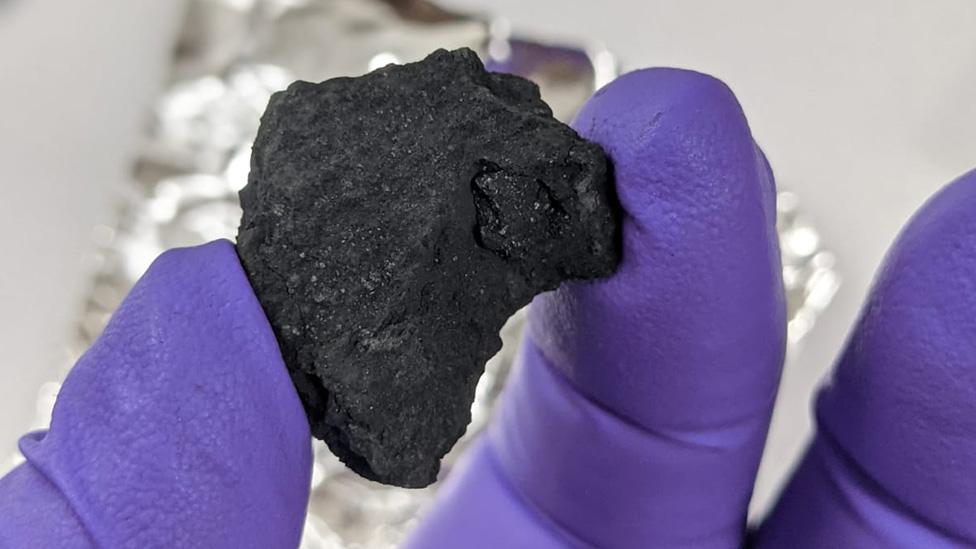Winchcombe meteorite: Could water have come to Earth from space?
- Published
- comments

Did water on Earth come from space?
That's something that a group of more than 100 scientists have been trying to work out!
They have been busy studying a a meteorite that crashed into Gloucestershire town of Winchcombe last year.
This tiny chunk of space rock is considered by many to be one of the most important meteorites to ever be discovered in the UK.
This is because it contains water - but not just any old water, a near perfect match for the water we have here on Earth!
The Winchcombe meteorite broke off an asteroid between Mars and Jupiter
Around 500g of the meteorite was discovered in people's gardens and local fields in Winchcombe last year.
These chunks were then collected and taken to London's Natural History Museum (NHM) where they were carefully catalogued before being shared with teams across Europe to investigate.
Meteorite is the rock left behind from a meteoroid as it enters our atmosphere and falls to Earth.
A meteoroid is the name given to the little chunks of rock that can break off if two asteroids bump into each other in space.
The scientists discovered that water made up around 11% of the meteorite's weight - and that the water had a very similar amount of hydrogen atoms to that on Earth.
The fact that the meteorite was found and collected less than 12 hours after it crashed, means that it had absorbed very little water from Earth.
Scientists are excited about this discovery because it supports the idea that rocks from space might have brought some of the key components of life - like water - to the planet, billions of years ago.
"All other meteorites have been compromised in some way by the terrestrial environment," co-first author Dr Ashley King, from the NHM, told 91热爆 News.
"But Winchcombe is different because of the speed with which it was picked up.
"This means when we measure it, we know the composition we're looking at takes us all the way back to the composition at the beginning of the Solar System, 4.6 billion years ago.
"Bar fetching rock samples back from an asteroid with a spacecraft, we could not have a more pristine specimen."
This map of our solar system shows where the main asteroid belt sits, in space.
Scientists were also able to work out where the meteorite might have come from.
By looking at camera footage of the meteorite as it crashed on Earth, and working backwards, they figured out that the meteorite came from somewhere in the asteroid belt between Mars and Jupiter, and may have taken between 200,000 to 300,000 years to arrive here on Earth.
Researchers will continue to look a the meteorite for years to come, trying to discover more secrets about our solar system.
- Published7 March 2018
- Published9 March 2021
- Published13 February 2023
